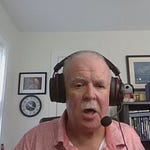Back by Popular Demand
The Real World PhD in Investing: First Semester Reading List
As a lifelong student of the markets and value investing, I've compiled what I consider the essential reading list for any serious investor - what I'm calling the "Real World PhD in Investing: First Semester." These books represent the cornerstone knowledge that will help you not just beat, but thoroughly crush the market over time.
Let's start with the two most foundational texts that every investor must read. First is Benjamin Graham's "The Intelligent Investor." This single book, with its updated commentary by Jason Zweig and insights from Warren Buffett, has launched more successful investing careers and fortunes than perhaps any other investment book ever written. Now, some might ask - why not "Security Analysis," Graham's other masterwork? While Security Analysis (which I fondly call the Ulysses of investment books) is incredibly comprehensive, The Intelligent Investor contains all the core tools and mindset principles needed for successful value investing.
The second essential text is Marty Whitman's "The Aggressive Conservative Investor." These days I prefer the term "patient aggressive investor," but both capture our investment approach perfectly. Whitman's genius lies in viewing companies through both distressed investor and credit investor lenses, taking Graham's margin of safety concept to new depths. His emphasis on credit analysis as a cornerstone of equity investing has proven invaluable throughout my career.
Peter Lynch's "One Up on Wall Street" comes next - a remarkably accessible read that outlines his six core stock philosophies: fast-growing companies, turnarounds, cyclicals, asset plays, "stalwarts" (blue chips), and slow growers. Lynch's legendary tenure at the Fidelity Magellan Fund, where he achieved 29% annual returns, demonstrates the effectiveness of his approach.
Despite its somewhat questionable title, Joel Greenblatt's "You Can Be a Stock Market Genius" is an outstanding primer on special situation investing. While some of the specific opportunities he describes may have diminished since publication, his insights into liquidations, stub stocks, spinoffs, and other special situations remain valuable.
The "Essays of Warren Buffett" are mandatory reading, particularly his earlier writings before Berkshire Hathaway became too large for special situations. These essays outline investment approaches that remain highly relevant for individual investors working with smaller amounts of capital.
"Poor Charlie's Almanac," while perhaps the most challenging read on our first-semester list, provides invaluable insights into Charlie Munger's rational approach to investing and life, including his famous mental models and probability-based decision making.
Marty Whitman's collected shareholder letters from Third Avenue Value showcase his credit-driven approach to long-term value investing. While he admittedly stumbled in his later years during the 2008-2009 crisis, his earlier letters contain priceless wisdom about patient, aggressive value investing.
Phil Fisher's "Common Stocks and Uncommon Profits" outlines his unique approach to growth stock investing - buying innovative companies during temporary setbacks. Fisher's influence extends to both Munger and Buffett, making this classic text essential reading.
James O'Shaughnessy's "What Works on Wall Street" is an encyclopedic examination of various investment strategies, backed by extensive data. It's a reference work that should always be within arm's reach of your desk.
"Merger Masters" by Kate Welling provides an accessible introduction to risk arbitrage through stories of successful practitioners like Mario Gabelli. While pure arbitrage may not be as profitable as it once was, understanding these concepts is crucial for evaluating business value and corporate transactions.
Christopher Risso-Gill's biography "There's Always Something to Do" chronicles Peter Cundill, whom I consider the Canadian Marty Whitman. His asset-value centric approach, filtered through a credit lens, offers valuable lessons for value investors.
"Quantitative Value" by Wes Gray and Tobias Carlisle modernizes Graham's principles through a quantitative lens, removing emotional bias from the investment process. This pairs well with Gray's "Quantitative Momentum," which explores the second of his "three churches of investing": value, momentum, and trend.
Carlisle's "Deep Value" examines activist investing and corporate control battles, providing crucial insights into measuring and identifying deeply undervalued situations.
Gary Antonacci's "Dual Momentum Investing" introduces the powerful combination of time series and relative momentum - a practical, implementable strategy that works well independently or combined with value approaches.
Morgan Housel's "Psychology of Money" offers unique perspectives on markets, money, and life, while helping readers avoid common financial pitfalls.
Howard Marks' "The Most Important Thing" shares crucial insights about risk, return, and asset allocation from one of credit investing's greatest minds.
Marty Zweig's "Winning on Wall Street" remains relevant decades after publication, particularly regarding trend models and monetary analysis.
Finally, Michael Covel's "Trend Following" rounds out our introduction to Gray's "three churches," demonstrating why this approach has created numerous trading fortunes.
For extra credit, I recommend Sam Zell's "Am I Being Too Subtle?" for its contrarian wisdom, Jack Schwager's "Market Wizards" for understanding speculative trading, and Victor Niederhofer's "Education of a Speculator" for its fascinating blend of markets, game theory, and life philosophy.
These twenty core books, available at most public libraries, provide more practical investing knowledge than many MBA programs. Master these texts, and you'll be better equipped than 99% of market participants to separate signal from noise and build lasting wealth through intelligent investing.













Share this post